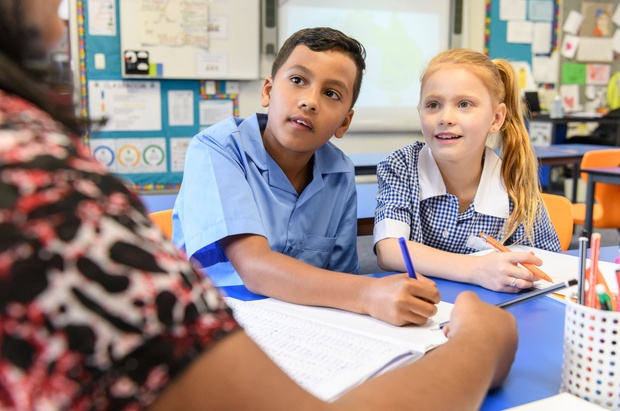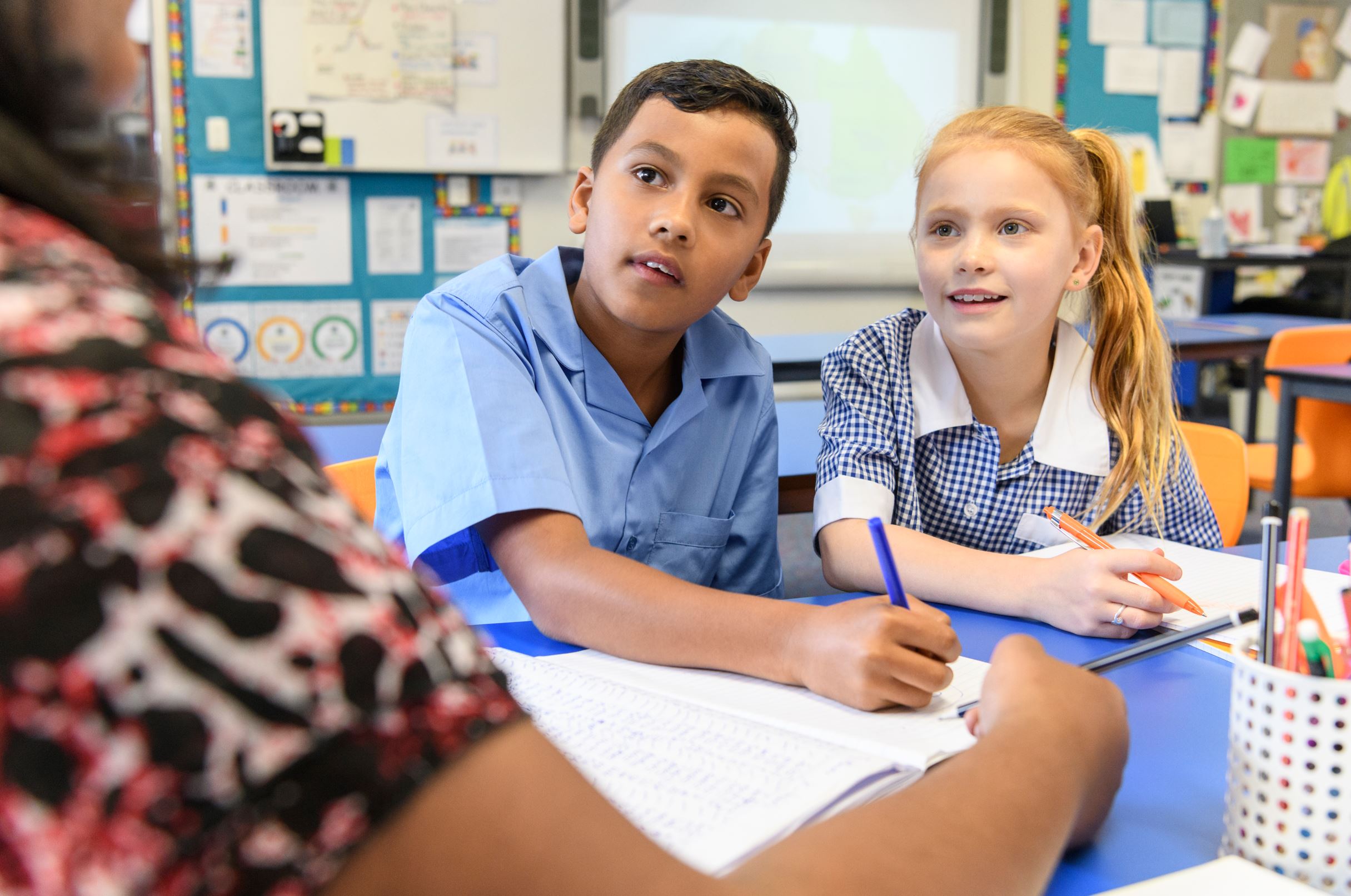Schools are incredibly busy places, and even with four hours of planning time each week, I struggle to stay on top of the myriad of tasks outside of direct teaching.
Teacher workload is a hot topic at the moment and there is a mix of opinions as to how to free up teacher time. Some advocates for the profession are calling for more planning time, arguing that lesson development is one of the most intellectually satisfying parts of teaching.
An alternative way to increase teacher time has also been proposed. The NSW Government is seeking to develop high-quality teaching materials to be made available for teachers to use, adapt, and deliver.
This follows a Grattan Institute report on teacher workload where 82 per cent of teacher respondents agreed that having access to shared high-quality curricular materials would save them significant time, with 63 per cent of respondents reporting it would save them three hours or more each week.
As a result, debates about autonomy have been brewing. EducationHQ has reported concerns that requiring teachers to use shared instructional approaches or materials would kill teacher autonomy, and take away one of the most important parts of a teacher’s job.
And here I delve into the controversial question: Should teachers (always) develop their teaching materials themselves?
My short answer is no. It’s unsustainable, and it’s unnecessary in order to be a great educator.
I can hand-on-heart say that some of the best lessons/units I have taught in the last 12 months were not made by me from scratch.
I have, of course, adapted elements, cut out sections, added in introductions or activities; but by and large, some of the best learning experiences I have facilitated have been based largely on someone else’s learning design.
They have been great lessons because I could dedicate time and energy to bringing them to life for my students.
Don’t get me wrong; I have done quite a bit of curriculum development this year, but not all of it has been for my own class. I’ve helped design much our new reading and writing curriculum across our primary school, as this is where my strengths lie.
It is satisfying and enriching, and fills me with a love for teaching. It is time-consuming though. Fortunately, what I’ve taught to my own class has been a mix of my own making, that of my colleagues, and some materials from schools with whom we have partnered. If I had to whip up each lesson I delivered myself this year, I would not have kept up with the work.
Luckily for my workload (and sanity), we have a culture in our school of shared planning. This means that, across a year level, teachers will mostly develop their teaching materials together, or adapt resources from past years. Teachers then deliver them to best suit the needs of their individual classes, and make adaptations to support different students.
This is what I see as the magic of great teaching. Yes, the resources have to be high-quality, but the joy of my work is in breathing life into these materials.
In my school’s view, this approach of shared planning with individual implementation strikes a good balance between teacher autonomy and ensuring cohesiveness of the students’ experience between classes.
We want to have a good idea of what students are learning across a school year, so we can build upon this in subsequent years, rather than creating big gaps in learning, or revisiting familiar territory.
Alternatively, if every classroom is an island - where individual teachers determine every lesson and topic - there’s no way to prevent the same content from being recycled (accidentally) year on year, or leaving hugely important ideas to be glossed over (as one assumes it’ll be taught somewhere else).
You might think that following the Australian Curriculum or other syllabi should prevent this, but many teachers know just how broad and general these documents can be.
If teachers can see the big picture of a students’ learning journey across the years, we can make sure those journeys make sense (ie are coherent) and have strong connections (are cohesive).
This “low variance” approach, as it’s known, is new to our school, but it will mean we can ensure our students’ learning builds across many years, rather than planning term by term, or week by week.
That’s why my colleagues and I welcome efforts to make high-quality materials available (for free). It’s incredibly time consuming to source, adapt, and prepare curricular materials so they are ready for the classroom. It’s why we’ve been looking for ways to share the load at our school, and opportunities to partner with others.
While I certainly do not advocate that schools adopt whole programs in entirety without adaptation or differentiation, I would argue that the pipedream of developing everything you teach from scratch only leads to burnout.
If you are creating everything yourself, no amount of additional planning time would feel adequate, in my opinion. You could always be planning more. In the middle of a busy week, I can admit my allocated planning sessions are not always 100 per cent productive.
Teaching is exhausting, after all.
I want to use my energy and patience for those important conversations with students, for analysing where my students are needing support, and for researching what techniques might address a barrier to their learning. The more time I spend on this, the better teacher I can be. Alas, my work output is finite.
When we are short on time and energy, it’s understandable why teachers are increasingly looking to Google, Pinterest or other resource-sharing sites to supplement their original creative works. But are these repositories of pedagogical gold? Or a mixed bag, devoid of quality controls?
When another teacher is willing to spend the time and energy to create rigorous and reliable materials that I can readily adapt, I’m not giving up my autonomy when I use them. I’m making more time for great teaching.
Nathaniel blogs about his work at cognitorium.org















